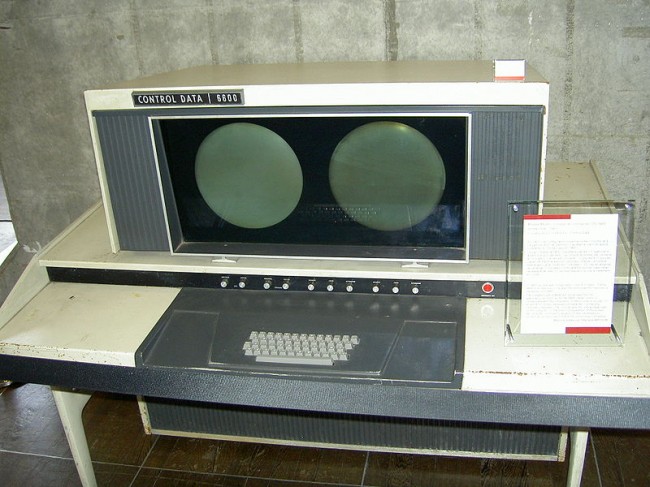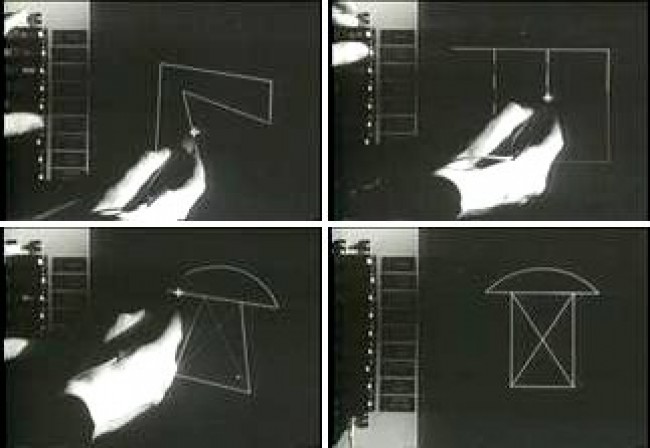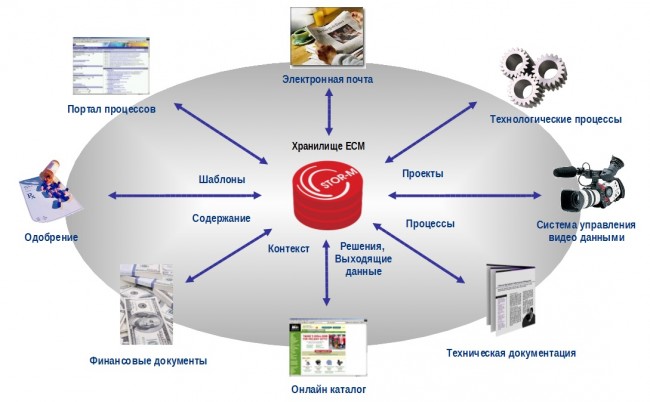File viewer, he's a viewer, he's a viewer

A file viewer is an application that presents file data in a user-friendly form. Viewers are used to view documents without using heavy editors. In this article we will look at viewers within the ECM systems.
ECM (Corporate Information Content Management ) - management, storage, processing and delivery of content across the enterprise . In accordance with the requirements of the MoReq standard, electronic documents with equal success must be opened both in the native applications and in the embedded viewer. However, for many users of ECM systems, the viewer is the main interface for working with documents. At the moment there are many formats with which the ECM system works, but to this day there is no convenient and universal built-in viewer in these systems. Why?
')
Let's try to answer this question and offer our solutions
Background
In fact, the first editor was the first viewer. The author, who created the document in the editor, transferred it to the reader, who viewed it in the same application.
One of the first text editors was O26, which was written for the CDC 6000 series console operator in 1967. The first “popular” text editor was the full-screen “vi” editor , originally created for Unix in 1976.

CDC 6600 series
Computer graphics began to develop in 1963, when the Sketchpad software and hardware complex appeared. It was the first vector editor implemented on a computer. And in 1968, it became possible to memorize an image and display it on a computer display.

Sketchpad software and hardware
Later, with the advent of personal computers, the program editors began to develop by leaps and bounds. They became more diverse, functionally complex, demanding of computer resources and, as a result, expensive. The appearance of viewers was actually promoted by one factor - the need to view files without using the native application (editor). After all, in fact, to view a printed document, you do not need a typewriter, and for viewing photos - photoshop.
Current situation
The concept of ECM involves working with a variety of unstructured data formats.
In ECM systems, the situation is aggravated by the fact that an information object can be represented in several interrelated files, database records and structures at once. As an example: a drawing scan is in tiff format, the source is in dwg, the attributes are in a card stored in the database, the structure of the product is in xml.

Also, the system is accessed by a large number of users, it can be not only hundreds of company employees from different departments and branches, but also clients. Some users need to view the text, and other drawings. And if you consider that there is a group of users who need to view several formats at the same time - which viewer is needed in such a system?
You can make several viewers in the same ECM system, which will meet the requirements of each user group, you can “tilt” all to save your documents in pdf format. Will this be the way out?
Industry specificity and specialized standards leave their mark.
The medicine
Example: X-ray image and its metadata in DICOM format.
When displaying such a document, the viewer should show both the image itself and all the necessary attributes (name of the patient, doctor, laboratory assistant, date of the image, body part, projection, type of equipment, etc.).
Design and construction activities
Example: drawing project documentation. When displaying such a document in the viewer, the drawing itself, the name of the object, the data about the creator of the drawing, the data of coordination and approval should be displayed.
Library
Example: Scan of a book, metadata in RusMARK format. In addition to the page and navigation through the book, the viewer should show data about the author, publisher, content, readers' comments, and so on.
Universal requirements for all viewers
Regardless of industry specificity, a number of general requirements are imposed on viewers.
Functional
- Authenticity (display of the document in the form in which the author created it)
- “Omnivorous” formats
- Content navigation
- Search by document and attributes
- Scaling
- Document orientation
- Bookmarks and comments
- Document protection (copy protection, print protection, etc.)
Non-functional requirements
- Convenience of work
- Performance
- Ease (undemanding to system resources, application weight)
- Free
Solutions
In our experience, there are few ways out of this situation:
1. Purchase and integrate an external viewer (for example, Brava ), as companies such as EMC Documentum, Alfresco, MS SharePoint do.
Pros. Everything has been done for you.
Minuses. No copy protection. The price of configurations supporting raster graphics, CAD and office formats for one workplace is $ 345, the network license for 10 work places is $ 3105. For installation in the reading room for 10 computers, the price may be acceptable, but for granting access to 4000 students it is not.
2. As much as possible to bring the document to one format , for example pdf, having dealt with sub-formats, compression, source formats and converters. This can be done automatically (converters are required) or manually.
Pros. It will take only one viewer (for example, Adobe Acrobat).
Minuses. Converters cost money, manual conversion - extra work, data loss, formatting, and other conversion problems.
3. Refuse the built-in viewer and agree with the “zoo” of external applications for viewing. Decide on their optimal list and install on all working machines.
Pros. Ability to cover all required formats with free viewers.
Minuses. Independent support, the number of installed viewers (one viewer - one type of documents).
4. Write your own viewer on the basis of numerous free libraries.
Pros. Ability to cover all customer requirements.
Minuses. Development time, incomprehensible budget, work with third-party software.
In the implementation of the viewer in our system, we stopped at option # 4. It was not easy for us, but it also became a certain competitive advantage. According to implementation nuances, in particular in electronic libraries and engineering graphics, we will tell separately.
Question for discussion: What problems / problems of displaying files did you encounter? What is the preferred implementation?
Afterword
With the viewer as with the machine. Prioritize, otherwise in an attempt to please everyone, you will get this:
Dance floor and color music as a gift.

Source: https://habr.com/ru/post/206336/
All Articles